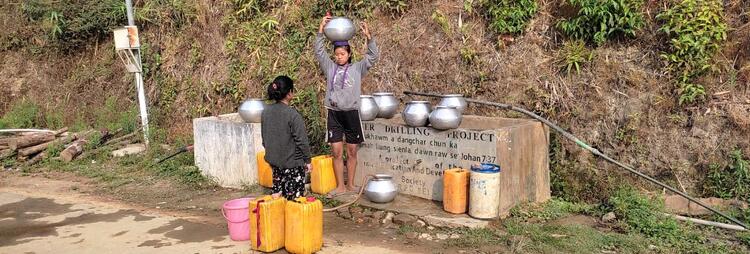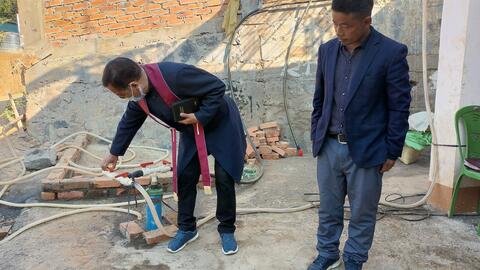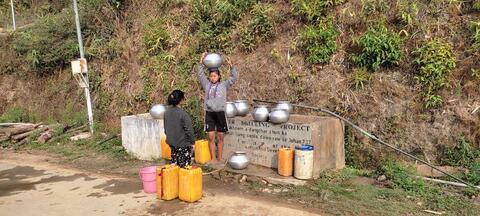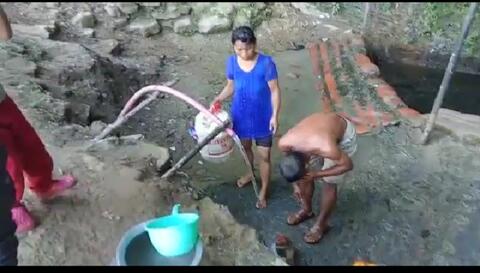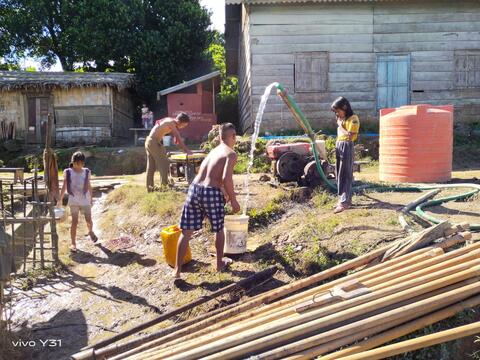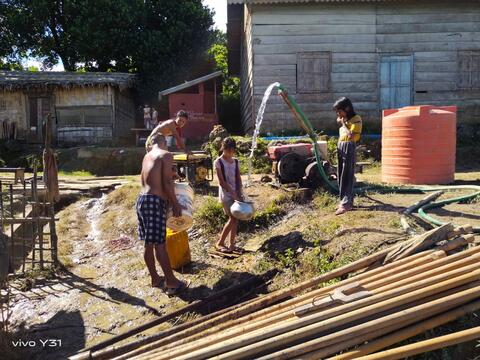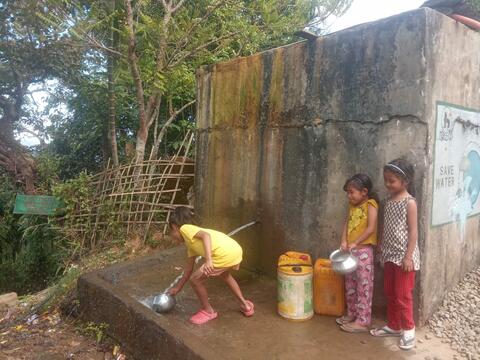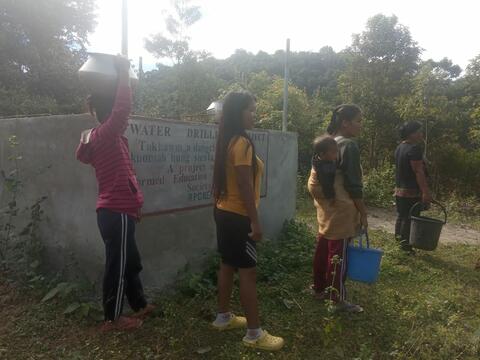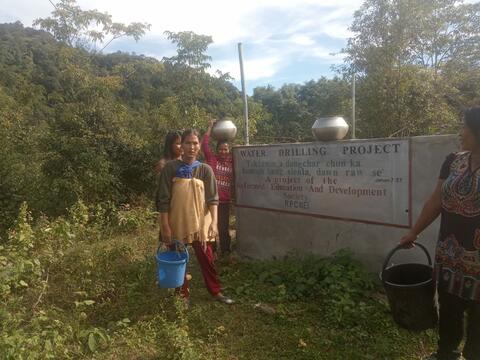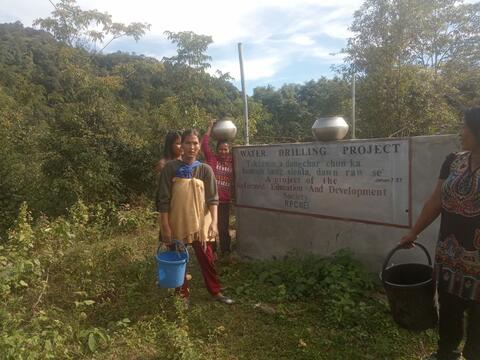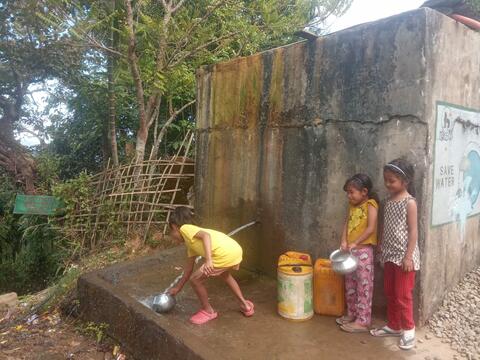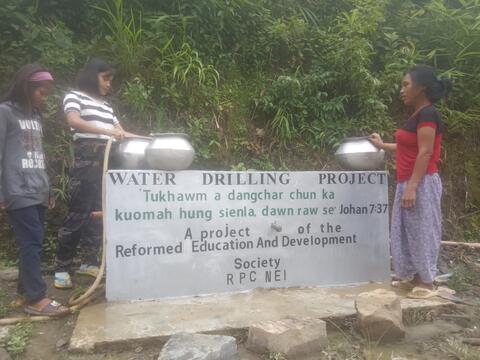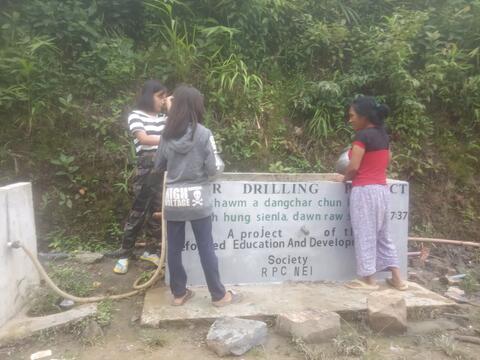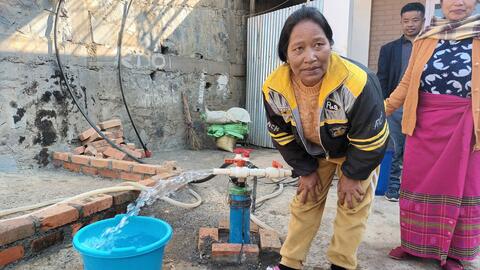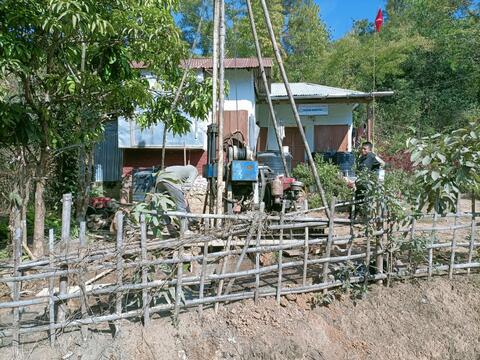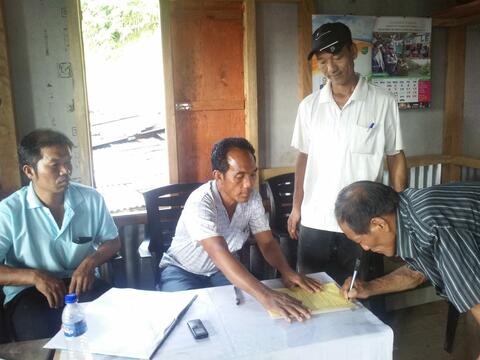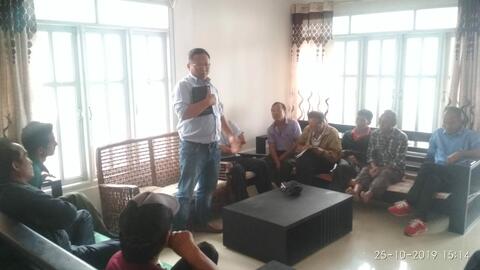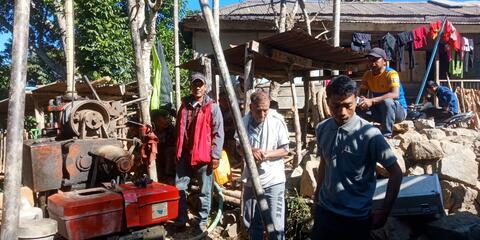SAFE DRINKING WATER
More villages are identified across the north-eastern states of our country viz., Assam, Mizoram and Manipur where the localities are facing acute drinking water shortage throughout the year. Elsewhere, selling of drinking water become a lucrative business. On tankers or vehicles, private suppliers for water limits and sell it per gallon to the thirsty communities. Under these conditions, the worst affected are the poor. They cannot afford to buy water from private suppliers. Thus, they are forced to use any water that is available even it is contaminated and unsafe for drinking purpose. Consequently, the community are most often hit by waterborne diseases
The main rural water sources in the hilly regions of Manipur and Mizoram states like springs have low discharges and the water is oozing and collected in small pits or trenches cut near them. This water thus collected is used for domestic purpose while some other villagers are fetching water from a spring located in depression in nearby village. Women and children girls go through a difficult path to get water for drinking. Because of the non-availability of clean drinking water, people of villages are suffering from wide spread occurrence of water and sanitation related diseases. The state of Assam is flooded every year by the monsoons and safe drinking becomes a rarity leading to various waterborne diseases. The major problems of the peoples in this region, particularly in the villages, is that they suffer a lot from various waterborne diseases because the water domestic consumption is highly contaminated. The government is trying to give pure, treated water to the people, which is a very huge task and may take more years to reach all villages.
During the past decades, READS organisation have taken various steps to alleviate shortage of drinking water in her intervention villages. Check dam, rain water harvesting, construction of water storage tank in springs and installation of electric water pump are executed.
Project Overview
|
Intervention area |
State: Manipur. District: Pherzawl. Block: Tipaimukh Tribal Development Block; Villages: Tuolbung, Taithu, Parbung, Senvon. State: Manipur. District; Churachandpur. Block; Saikot Tribal Development Block. Village; Muolvaiphei, Valpakot |
|
Number of ESP servicing to the public |
7 |
The rural water project was undertaken as a means of increasing adequate and safe drinking water supplies to the 8 villages access by atleast 20% of the total population within the intervention villages of Pherzawl District, Manipur. In the past, the State concern department attempt to provide water supplies to the communities by piping upstream water to their villages. However, most of the water sources are non-perennial and have less discharge and dried during the winter season.
With strong desire to provide drinking water supplies to 8 villages facing acute water shortage, READS carried out this project in 2019.
This project has been noted successful, both in its execution and outcome and has been significant impacts in the lives of those households living in the targeted village are now access to regular water supplies. Some household piped water direct to their houses.
The Village Authorities of each villages holds ownership, responsibilities of maintenances and water supply network. Another area in which Signiant changes has occurred is the reduced burden on women. Formally, collecting water from spring or river was the women’s responsibility. However, after the completion of this project women themselves and children believe the burden has now dramatically reduced and women’s ability to engage in productive activities has increased. Majority of the household view the impact as allowing for them to engage in socio-economic activities such as farming, raising, etc, One of the main advantages to the water supply network in the village is that there will be more peace as many disputes erupt at the spring tap as well as at the place of river water point and people argue over entitlement and queuing.
Table showing details of ESP installation
|
S/No. |
Name of village |
Depth |
No. of holes drilled |
Started on |
Completed on |
|
01. |
PARBUNG ‘A’ |
250 fts |
01 |
29 Nov 2019 |
29April 2020 |
|
02. |
PARBUNG ‘B’ |
300 fts. |
01 |
10 Jan 2020 |
4 March 2020 |
|
03. |
TAITHU A |
250 fts |
01 |
15 Jan 2021 |
28 Feb 2021 |
|
04 |
TAITHU B |
150-300 fts |
02 |
10 Jan 2020 |
4 March 2020 |
|
05 |
TUOLBUNG |
150-220 fts |
02 |
14 June 2921 |
6 Sep 2021 |
|
06 |
SENVON |
250 fts |
01 |
5 Nov 2021 |
15 Nov 2021 |
|
07 |
RAWVAKOT |
200fts |
01 |
16 Nov 2021 |
19 Nov 2021 |
|
08 |
TINSUONG |
150-260fts |
02 |
5 Aug 2021 |
21 Aug 2021 |
|
09 |
PHERZAWL |
150-200 |
04 |
24Aug 2021 |
3 Sept 2021 |
|
10 |
MUOLVAIPHEI |
310fts |
01 |
8 Dec 2021 |
18 Feb 2022 |
|
11 |
VALPAKOT |
300fts |
01 |
4 Jan 2022 |
17 Jan 2022 |

